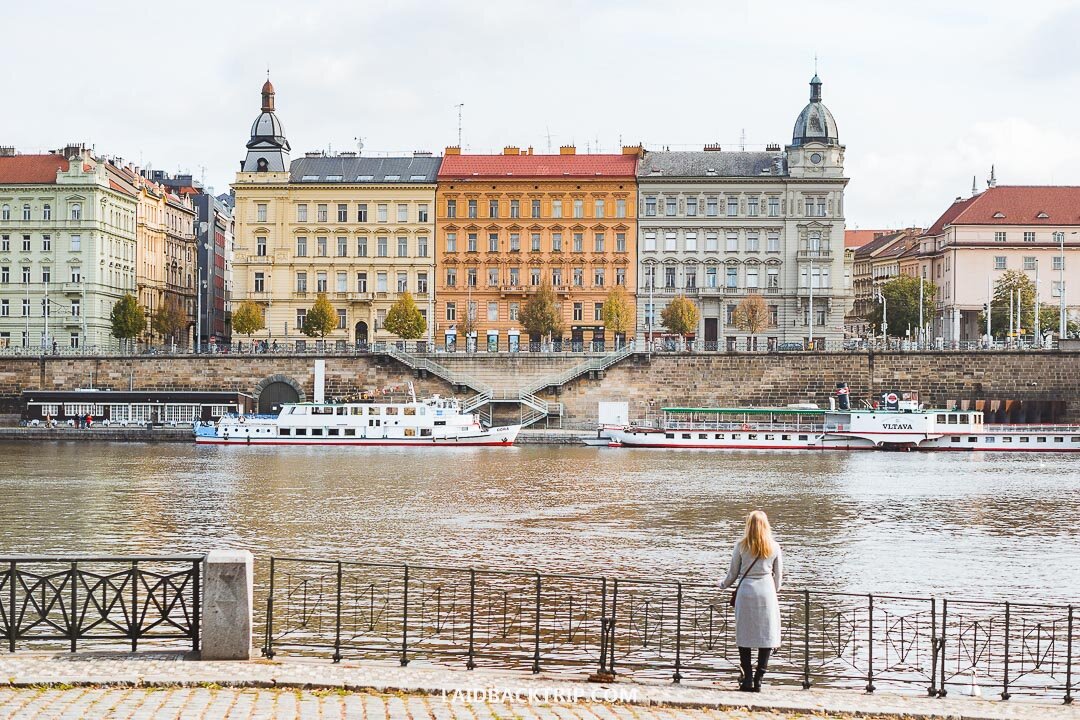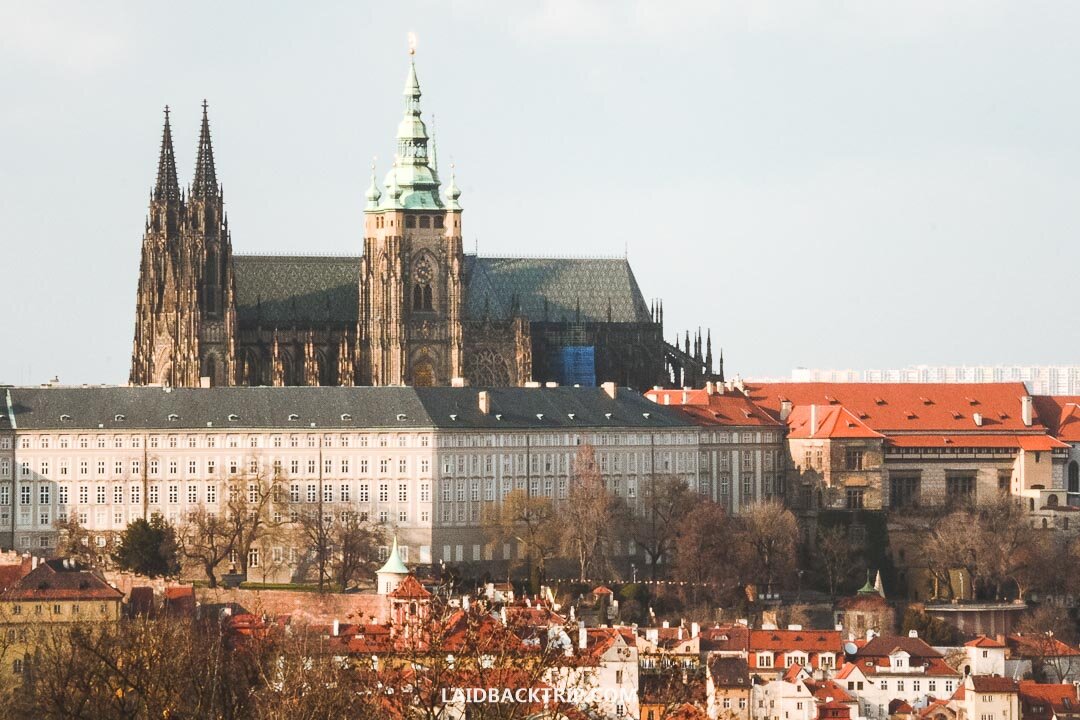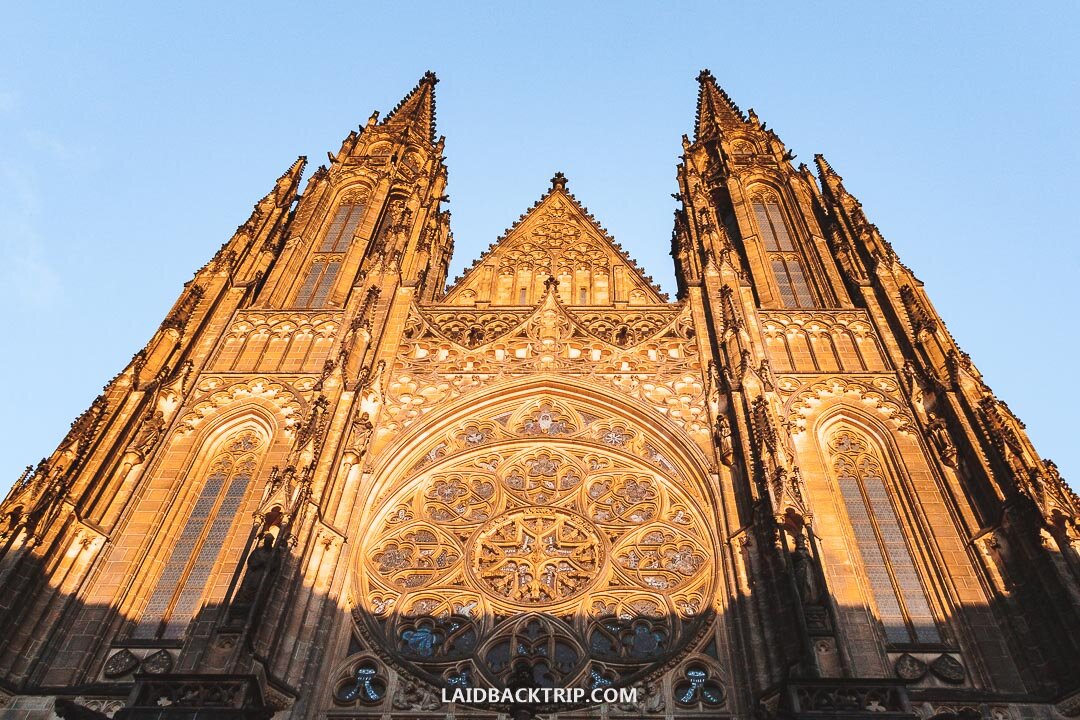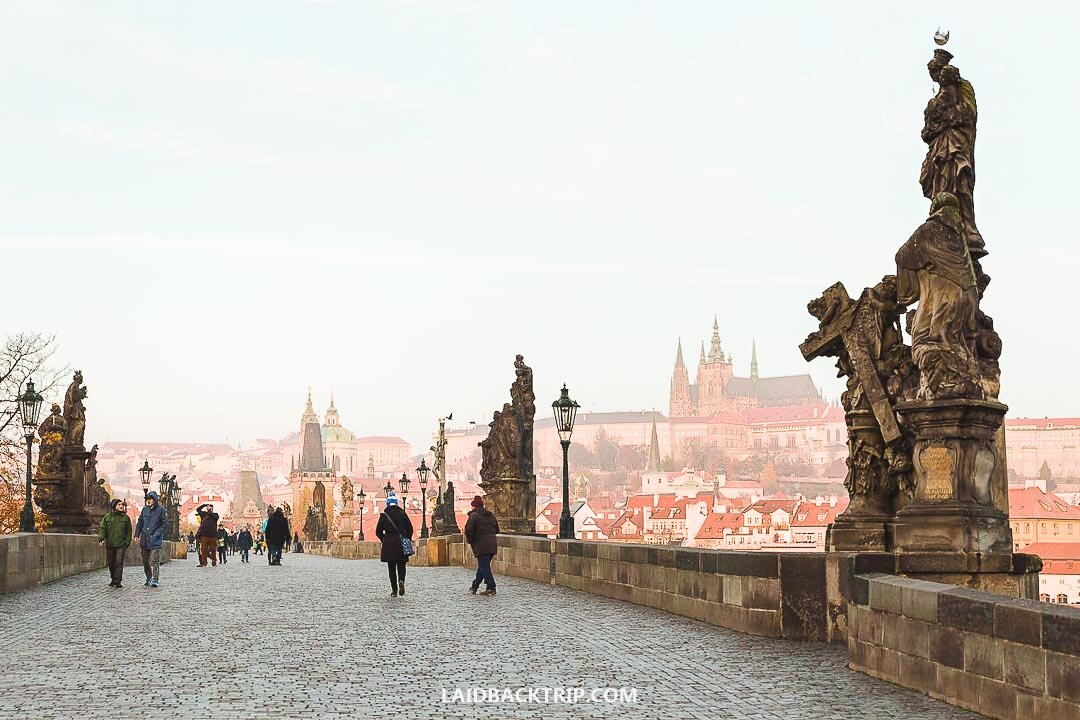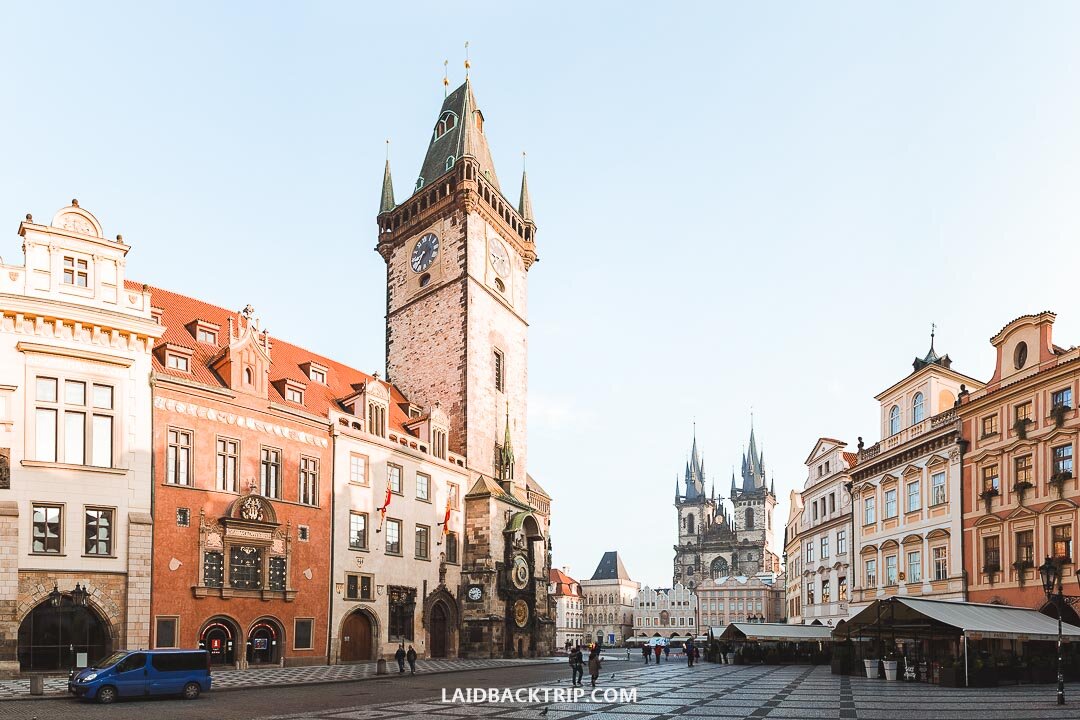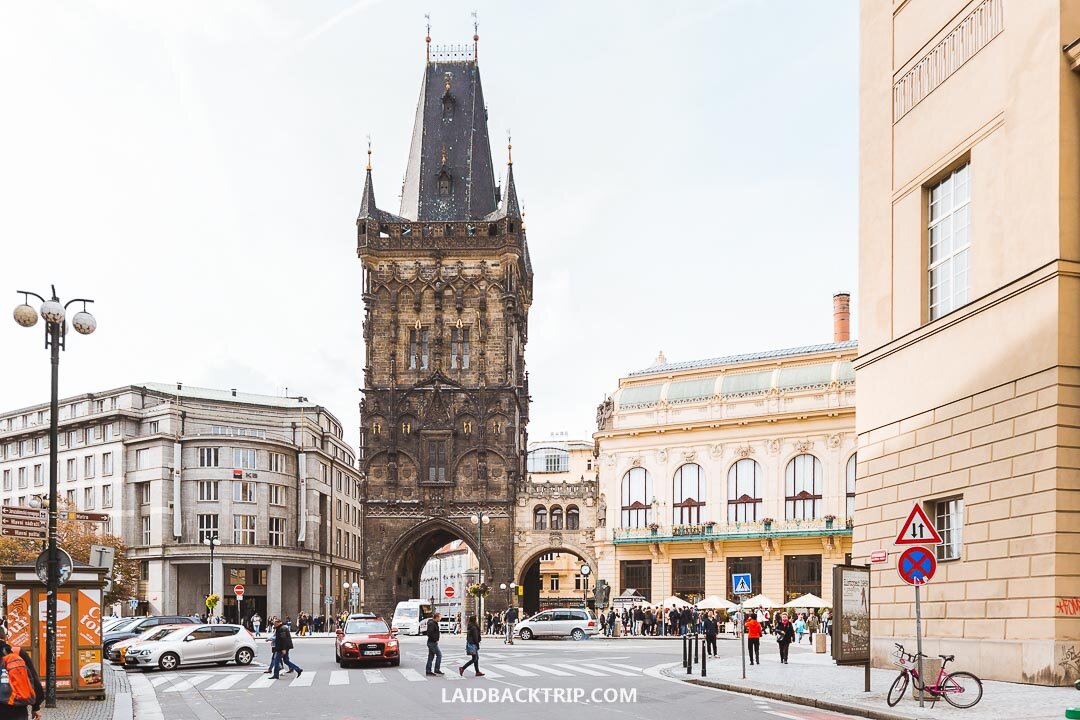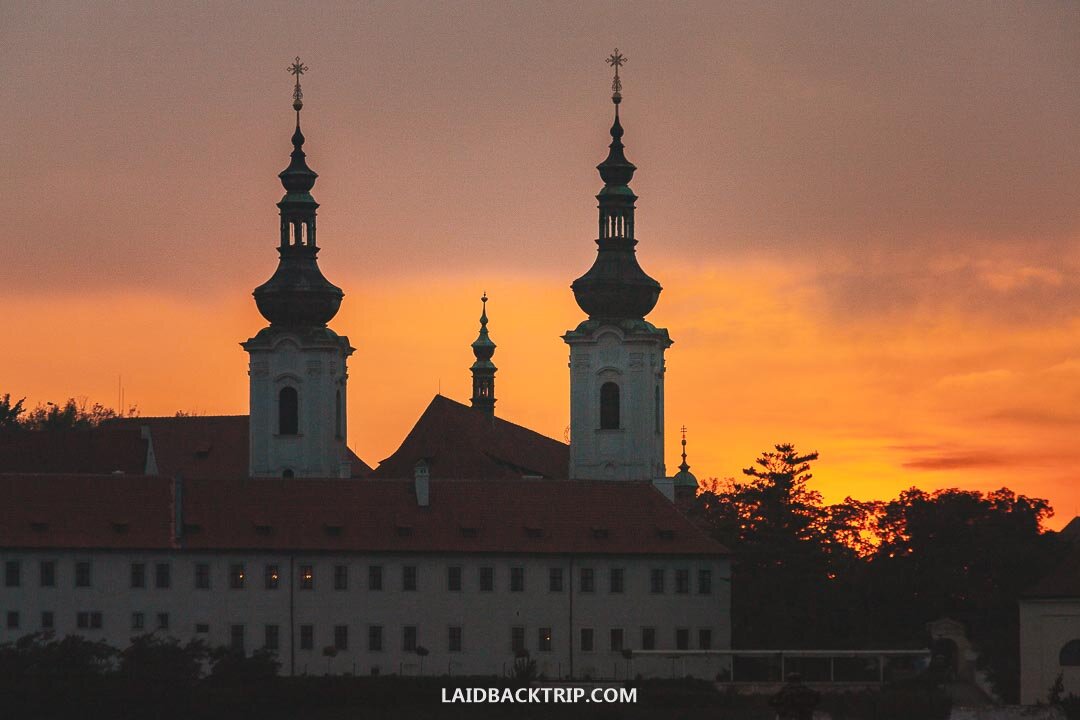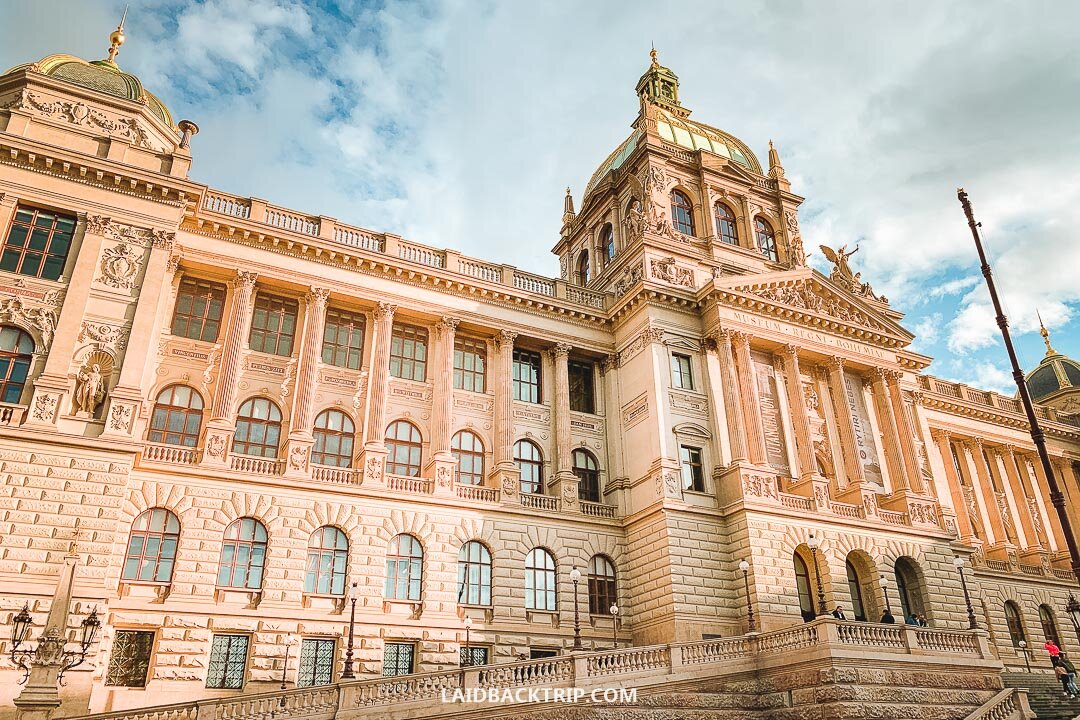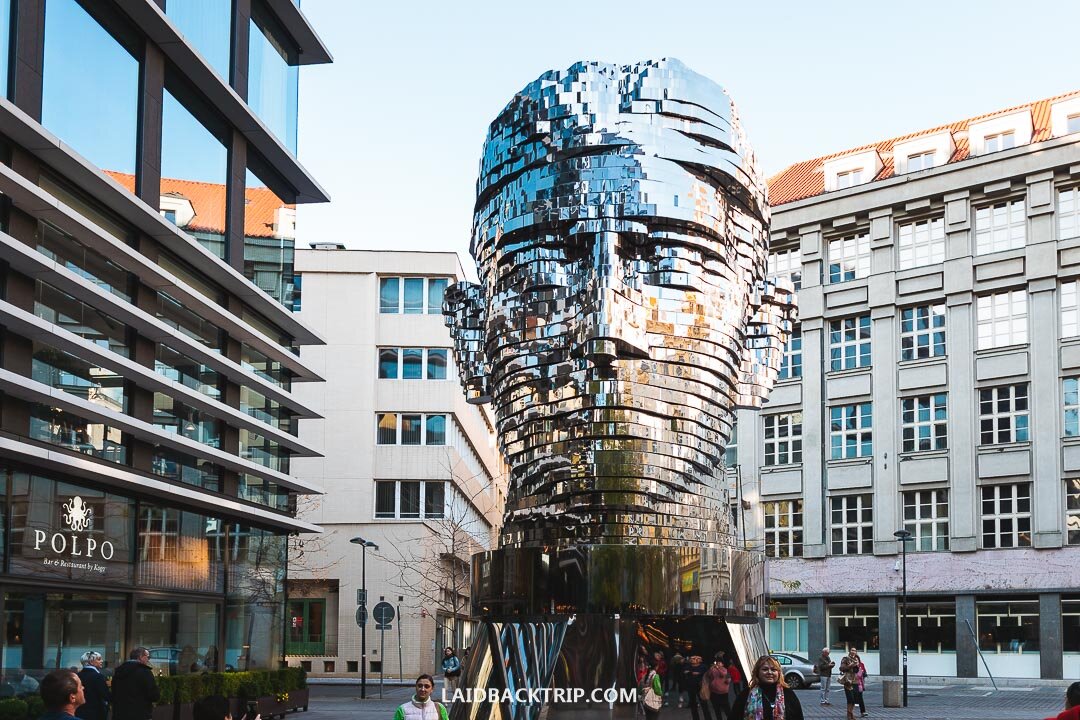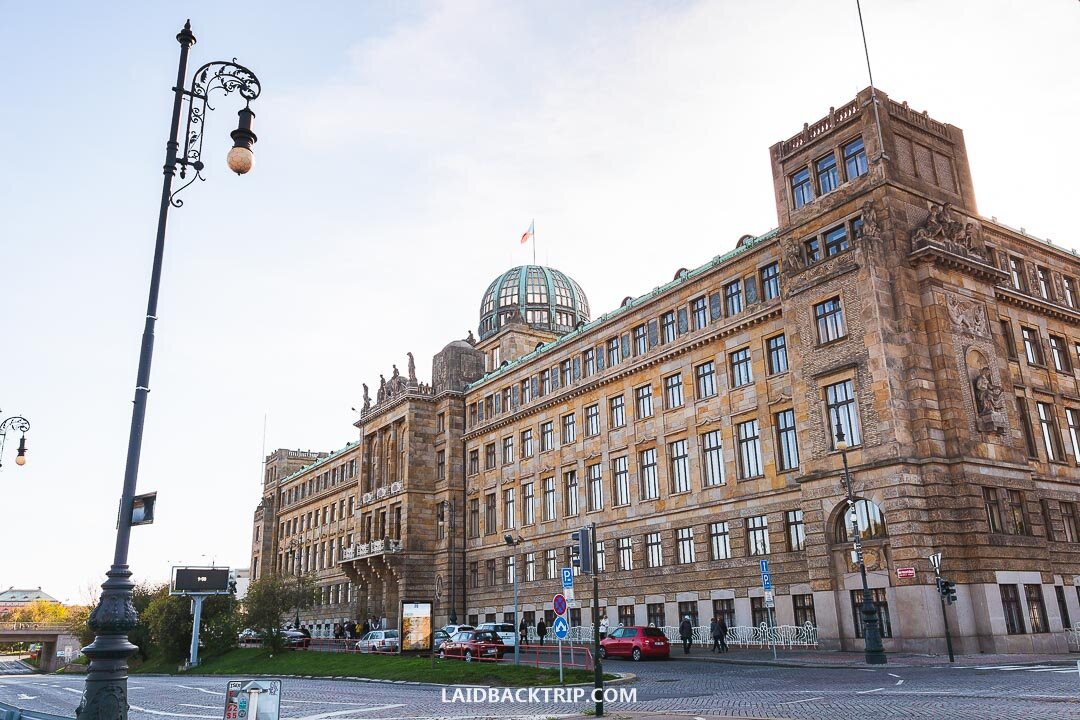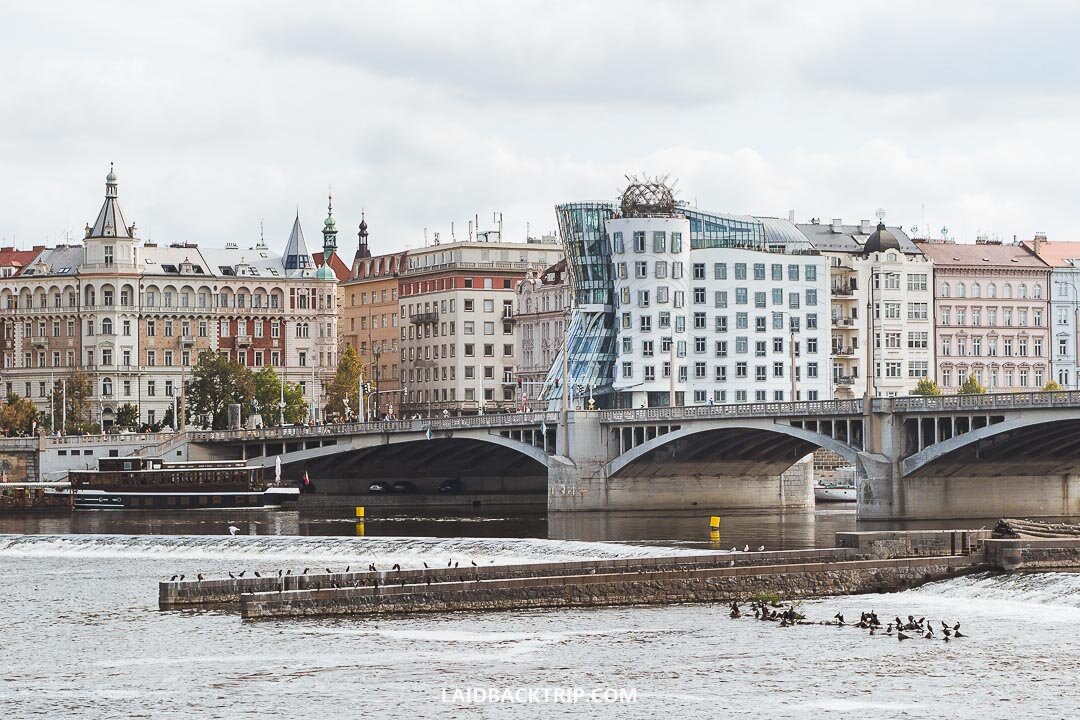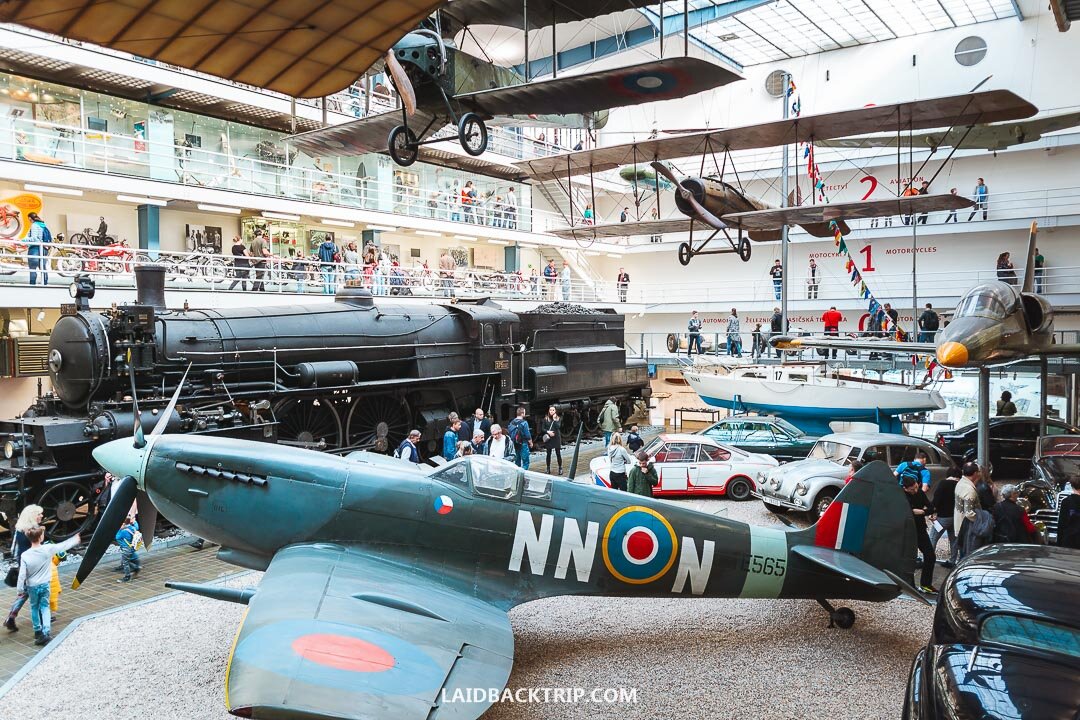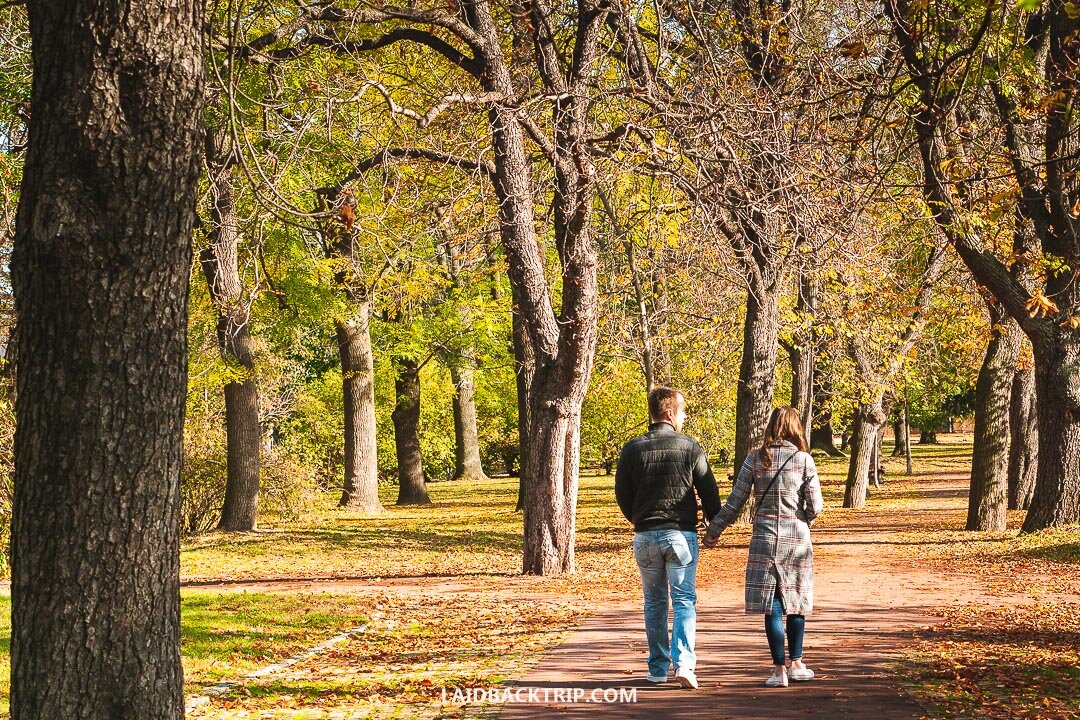Must-Visit Places in Prague: Top Tourist Attractions
Have you ever wondered what are the top attractions and must-visit places in Prague, Czech Republic? We've compiled a list of the most visited places in Prague to help you see the best of Prague and plan your trip to the capital of Czechia.
Prague, the heart of Europe and the capital city of the Czech Republic, is one of the most beautiful cities in the world.
Yes, we must admit that we are a bit biased here, as we've been calling this city home on and off for more than ten years, and even during our travels we always knew this is the place we want to return to.
But we are pretty sure that hadn't we been living and wandering Prague's streets for that long, we still would have considered it one of the most wonderful destinations we've ever visited.
Simply, the city of hundred spires has its genius loci, and a large number of top attractions, must-visit places, and must-do activities keep millions of travelers arriving in Prague busy all year round.
The list of Prague's top attractions could easily be endless, but we've compiled this post to show you the best of the best, our favorite places in the city, and places you can consider putting on your Prague itinerary.
From centuries old cobblestone streets, top sights such as Old Town Square, Charles Bridge or Prague Castle to more alternative and not that popular attractions among tourists, we believe that reading this article will help you figure out what you want to see in the capital of Czechia, and also, when pressed for time, what you can live without.
TOP ATTRACTIONS IN PRAGUE
From our experience we know, that travelers usually stay in Prague for two or three days, therefore, itineraries are often quite packed, and there is not always time to go off beaten path.
Sometimes they only have one day in Prague which makes the visit even more rushed.
But even when keeping this in mind, we think that apart from the best-known attractions in the historical center you should not be afraid to put on your list of must-visit places also sights, which according to us, also deserve attention.
So without further ado, let's have a look at the best things and must-visit places you should not miss when in Prague.
PRAGUE CASTLE
Sitting on the top of the rocky hill and overlooking the magical city, Prague Castle (Prazsky Hrad) is the most important and famous sight in the Czech Republic.
Long ago, it used to be a seat for Czech kings and rulers, now the president of the country resides in the complex.
Prague Castle is more than just one of the largest castle complexes in the world, and the seat of the head of the state, it is a symbol of the Czech Republic.
Its history dates back to the 9th century, but we still don't know, who actually founded Prague Castle.
St. Vitus Cathedral, a stunning example of Gothic architecture, is also a part of the Prague Castle complex.
Although watching the panorama of Prague with the outstanding Prague Castle from the waterfront is perfect, you should also visit the complex yourself, because the views from the top are hard to beat, plus you will get a chance to admire the architecture up close.
Simply put, Prague Castle is a must-visit place in Prague.
You have more ways to get to the Prague Castle, so don't forget to check out our detailed guide.
SCHWARZENBERG PALACE
When you arrive at the famous Hradcany Square, a beautiful renaissance building will catch your eyes immediately.
Schwarzenberg Palace has one of the most impressive sgraffito work of all buildings in Prague inscribed on its walls and dominates the Hradcany Square. It is a striking historic building that you shouldn't miss while exploring Prague.
The palace was built in the 16th century by the Lobkowitz aristocratic family but changed the ownership in the 18th century to the Schwarzenberg family.
The front of the building has a quite unusual reversed T-shape, and there is a modest museum inside which provides a much needed peaceful space away from the crowds gathering in front of the Prague Castle.
By the way, the Schwarzenberg family is connected to several other top attractions in Czechia, such as Cesky Krumlov Castle or Hluboka nad Vltavou Castle.
ST. VITUS CATHEDRAL
A coronation and burial place for many Czech kings and patron saints, St. Vitus Cathedral (Katedrala Svateho Vita) is the most famous and (according to us) the most beautiful cathedral in the Czech Republic.
It's a dominant of the Prague Castle and the city in general, as you can see it from many places around the city, such as Vysehrad, Zizkov Tower or Charles Bridge.
The fascinating history of the cathedral goes hand in hand with Prague Castle.
One of the most staggering facts you can learn about this gothic cathedral (the structure you can see now) is that the construction began in 1344 and took almost 600 years to finish it.
You've heard right, it took six centuries to build it and the final works were completed in 1929.
If you would like to read about more facts, check out this article 13 Amazing Facts About Prague You Didn't Know.
Once you get closer to St. Vitus Cathedral, you will immediately get impressed by its heigh and a large number of details, so take your time and explore it thoroughly.
Be prepared that taking a photo of the cathedral is quite challenging.
If you prefer guided tours, check out this well-rated Prague Castle and St. Vitus Cathedral Tour.
LORETA SQUARE
Prague has many wonderful squares, and some of them should undoubtedly be on your list of must-visit places.
Prague's Loreta is one of the most interesting squares to see while visiting the Prague Castle grounds, as it's only a few minutes away from the entrance.
Around the square, you will find a collection of beautifully decorated buildings. The most notable structure in the complex is the baroque church, which you can see from inside.
Also, this is the place, where you can hear every hour (if you are patient enough) the famous bells playing nice melodies!
Opposite the church, you will find another impressive baroque building, Cernin Palace - the seat of the Ministry of Foreign Affairs. Unfortunately, the building is closed to the public, so you can only admire it from outside.
ST. NICOLAS CHURCH
The most prominent baroque church in Prague, St. Nicholas Church (Kostel Svateho Mikulase), is an architectural masterpiece in Lesser Town on Malostranske Namesti.
One of the most beautiful views of the church is from the Prague Castle or Charles Bridge, as you can see the unmistakable dominant beauty of the dome and tower. The dome itself has a diameter of 20 meters and is absolutely stunning.
Famous artists decorated the church interiors with frescos, paintings, and sculptures, and the baroque organ, which was played by Wolfgang Amadeus Mozart in 1787, has over 4000 pipes up to six meters long.
You can go inside, but there is an entrance fee.
On selected days, you can also enjoy concerts within the church's walls.
Interestingly, there are three churches in Prague carrying the name St. Nicholas.
The other church stands on Old Town Square, and the last one is in the Vrsovice district.
To get to the church we are talking about here, take a tram to Malostranske Namesti, which will take you directly to the church.
PETRIN FUNICULAR
Funiculars are always fun and exciting to take, and a short funicular ride to Petrin Hill with the views of the Prague Castle is one of the best things to do in Prague.
The biggest advantage of Petrin Funicular (Lanovka na Petrin) is that you can use your public transport ticket (don't forget to validate it before you get on), so even budget travelers can enjoy it, and it's one of the coolest ways to get to the top of Petrin Hill.
Even though you can climb the hill on foot, you should try at least one ride with Prague's most famous funicular.
But the funicular is not the only reason worth visiting Petrin Hill, as the area is technically a beautiful park with attractions such as Petrin Tower, Hunger Wall, or the Memorial of the Victims of Communism.
To get to the Petrin funicular, take a tram to Ujezd, and from there it's a short walk to the lower station.
CHARLES BRIDGE
A historic Gothic stone bridge across the Vltava River that connects the Old Town and Lesser Town, Charles Bridge, is beloved by tourists, and together with Prague Castle creates an unforgettable Prague's postcard panorama.
The bridge we can see and walk on today replaced a Judith Bridge, which was destroyed in 1342 by a flood. It's the second oldest bridge in the Czech Republic, the construction works began in 1357 and were finished in 1402.
The famous bridge is 516 meters long, 10 meters wide and 13 meters high, at both ends you will find two guarding towers which add to the exceptionality.
Currently, there are 30 mostly baroque statues of saints lining the bridge.
Charles Bridge is also a part of the Royal Way, one of the most beautiful Prague walks.
To avoid the crowds, we recommend you visiting Charles Bridge early in the morning or later in the evening, otherwise this place is packed to the brim, especially during summertime.
PRAGUE BRIDGES
They say that Prague is the city of spires and towers, but we can hardly ignore the fact that there are 32 bridges across the Vltava River, so we think, that they deserve your attention, and we should talk about them a little bit more.
To be honest, only 18 bridges of the bunch connect both sides of the river, and 14 of them connect islands on the Vltava River with the shore.
The shortest bridge is the Cechuv Most (169 meters).
Radotinsky Most is currently the longest bridge (2291 meters) in Prague, though it's a highway bridge, so do not expect statues here guys.
The most beautiful view of Prague Bridges is from Letna Park, which is a huge park on the hill plateau, and we believe that when planning the trip, you had already seen a picture or two from the most famous viewpoint.
To get the view you can walk uphill from Malostranska (get there by tram or metro line A). Other tram stops are Chotkovy Sady on the west side, Sparta on the north, Strossmayerovo Namesti at the east, or Cechuv Most at the south.
KAMPA
Kampa Island (we call it just Kampa) is a picturesque island in the heart of Prague, and one of the most romantic and marvelous places in the city.
Walking around the island while enjoying dimly lit streets or wandering around the waterfront is a delight to experience especially after dark when the place gets really moody.
Kampa became an island after a canal was created to feed the water to the mill.
Kampa Island is home to many attractions such as modern art gallery Kampa Museum, mills, Liechtenstein Palace, public art displays, or the babies' statues by David Cerny (same statues you can see crawling the Zizkov TV Tower).
ZOFIN PALACE
A short walk from National Theatre is Zofin Palace, a neo-renaissance building standing alone on the Slav (Slavonic) Island.
Slav Island is a peaceful retreat from the crowded waterfront and an extraordinary place for cultural life in Prague. Zofin Palace is a venue for balls, concerts, conferences, exhibitions, or even weddings. The island features a nice park popular with families and kids for short walks or those craving a break from the busy city.
The island itself is prone to floodings (was created after a big flood in 1784), and the palace had to been repaired several times in the past.
To get there, take a tram to Narodni Divadlo, then cross the bridge from Masarykovo Nabrezi to Slav Island (Slovansky Ostrov).
OLD TOWN
One of the oldest and most beautiful districts in Prague, Old Town, is home to many important tourist sights, historical buildings, and famous landmarks.
The most significant sight you can visit there is, without a doubt, the Old Town Square, but we are going to talk about it in the next paragraph, so we'll just leave it for now, and mention other notable things to see and do in the area.
To name a few, we'll start with Estates Theatre, where Don Giovanni opera by famous W. A. Mozart had a premiere, Karolinum, which is a complex of buildings and the seat of the Charles University, Clementinum, home to National Library of the Czech Republic, Powder Gate, Municipal House, or Rudolfinum at the Vltava riverbank.
To get to the Old Town Square you have several options. Take metro line A to Staromestska, B Line to Namesti Republiky or A or B line to Mustek.
From those stations, many top Prague attractions are only a couple of steps away.
Best of Prague Private Guided Walking Tour is the perfect choice for travelers who want to see and visit all Prague top sights such as Old Town, Jewish Quarter, Charles Bridge and Prague Castle, and have only limited time in the city.
OLD TOWN SQUARE
Your trip to Prague wouldn't be complete without visiting the famous Old Town Square.
The Old Town Square is often overcrowded because no traveler to the city wants to miss it out. But this information should not put you off from having this sight on your list.
This is a must-visit spot, but you still can enjoy a peaceful atmosphere when you set off exploring the city early in the morning. And early in the morning means around the sunrise, not at 10 AM.
It is the oldest square in Prague, but the main reason to visit is that it is so beautiful, and there are so many things to see and do here, that everyone wants to admire the stunning architecture and magical pulsing atmosphere even for a while.
So what can you see at the Old Town Square?
For start, check out the Old Town Hall from the 14th century, St. Nicholas Church (remember when we talked about the church that carries the same name at Malostranske Namesti?), the Church of Our Lady Before Tyn with characteristic twin towers, Jan Hus Memorial or Kinsky Palace.
When you arrive in Prague in the winter, Old Town Square is packed with Prague Christmas Markets selling mead and mulled wine, so you can warm up your body when it gets too cold.
Don’t forget to check out our post on What to Pack for Prague in Winter.
We saved the best to last, Prague Astronomical Clock, also known as Prague Orloj belongs among top attractions to see here.
BEST HOTELS IN PRAGUE
Budget | Hostel Boudnik - This hostel offers both dormitories and private rooms, and features free wifi- clean common areas and great location close to the city center.
Mid-range | Nyx Hotel Prague - It is quite hard to pick only one hotel in the mid-range category as there is simply too many of them, but this hotel lies in the center and beats the others with the unique design.
Luxury | Augustine Prague - A luxury hotel located close to Prague Castle set in an old monastery offers beautifully appointed rooms and apartments with stunning views over Prague.
PRAGUE JEWISH TOWN
Josefov (also known as Jewish Quarter), is one of the most fascinating city parts of Prague, that you must visit on your trip.
Josefov is also the birthplace of one of the most influential literature authors of the 20th century Franz Kafka.
Unfortunately, most of the quarter was demolished at the turn of the 19th and 20th centuries, so you won't find many authentic buildings there, except for a few synagogues, Old Jewish Town Hall and the Jewish Cemetery.
That's being said, the quarter is still very beautiful.
The best thing to do while you are in the area is to visit the Jewish Museum, where you will find the expositions in four historical synagogues - Maisel Synagogue, Klausen Synagogue with the Ceremonial Hall, Pinkas Synagogue and Spanish Synagogue, and also to visit one of the oldest surviving Jewish burial grounds in the world, Old Jewish Cemetery.
To get there take a metro A-Line to Staromestska, and walk to Maiselova street.
Getting around the Prague Jewish Quarter on a Prague Private Jewish Quarter Tour will help you discover all the secrets of this Prague's mysterious neighborhood.
POWDER GATE
One of the original 13 city gates in the Old Town, Powder Gate (Prasna Brana), is 65 meters high and has the coolest name of the bunch.
It used to serve as gunpowder storage in the 17th century, and that's how it got its name.
However, the construction of this magnificent tower, which resembles towers on the Charles Bridge, began in 1475. It's one of the postcard symbols of Prague, and also Royal Route starts there.
In the 19th century, the tower was rebuilt into a neo-gothic style as you can see today.
The gate is open to the public, and you can climb the steep 186 steps to a viewing platform, to enjoy some spectacular views of the Old Town.
To get there, take a tram or metro (Yellow B Line) to Namesti Republiky, it's just a short walk from there to Celetna and Na Prikope where the tower stands.
MUNICIPAL HOUSE
You won't find a better example of Art Nouveau in Prague other than Municipal House (Obecni Dum), which has an eye-catching facade and stunningly beautiful interiors.
The building stands on the Namesti Republiky right next to the Powder Gate, and the structure we can see nowadays is a new building that replaced the demolished one at the beginning of the 20th century.
The new building was raised in the Art Nouveau style. It was reopened in 1912 and played a significant part in Czech history, as in 1918 an independence of Czechoslovak Republic was announced here.
You can expect inside a huge concert hall, beautiful paintings, stucco on walls, chandeliers, and theme-styled halls and many other rooms.
If you plan on arriving in Prague in spring, the Prague Spring Festival hosts several concerts in the Municipal House during this exclusive musical event.
Friendly reminder, we would go to the tourist restaurant in the Municipal House only to see the interiors, not for the food or service.
To get there, take a tram or metro (Yellow B Line) to Namesti Republiky.
STRAHOV MONASTERY
Founded in 1140, Strahov Monastery is the oldest Premonstratensian monastery in the Czech Republic. It's located high on the hill between Loreta and Petrin Hill, only a short walk from Prague Castle.
Inside the complex is a beautiful library with more than 200 thousand books and manuscripts, Strahov Gallery with beautiful gothic and baroque paintings, or the Church of the Assumption of the Blessed Virgin Mary.
And there is also a restaurant where you can try craft beer from the local brewery.
To get there, take a tram to Pohorelec, and walk about two minutes to the complex.
RUDOLFINUM
When walking around Prague, you will soon notice that touts are offering concerts on almost every corner.
Simply put, Prague is the city of music.
Although you have many choices where to go, one of the most spectacular concert halls in the Czech Republic is Rudolfinum. We had a chance to visit once already, and hopefully, it was not the last time.
The classic music together with the stunning interior was magical, although the building is for sure notable even from the outside.
WENCESLAS SQUARE
Wenceslas Square is not a typical historical square you would expect in Prague, but more like a large commercial zone and shopping boulevard in the city center.
Named after the patron saint of Bohemia Saint Wenceslas, the rectangular-shaped square is lined with hotels, fashion stores, and restaurants.
At the top of the square is a beautiful building of the National Museum and the statue of St. Wenceslas sitting on a horse (this statue is also a meeting point for locals, who just simply say 'Sejdeme se u kone' which means 'Let's meet at the horse').
For locals, the square is also an important center of public gatherings, mass demonstrations, celebrations, and several historical events, such as the 1968 invasion of Czechoslovakia by the Warsaw Pact armies, the self-immolation of student Jan Palach, or the protests during the Velvet Revolution happened here.
Buildings on the side of the square feature beautiful facades and have many shopping arcades and passages, the most famous one is the Lucerna Passage connecting Stepanska and Vodickova street.
Nowadays the lower part of Wenceslas Square is only for pedestrians and crowded with tourists more than ever. The upper part has a big pedestrian crossing and together with the traffic on the road, is one of the busiest places in Prague.
To get there, take a tram to Vaclavske Namesti, or metro to Mustek (lower part) or Muzeum (upper part).
STATE OPERA
Former New German Theatre, State Opera in Prague is one of the most important music venues in Central Europe and a great place to enjoy a ballet or opera.
State Opera is beautiful from outside, but the interior is simply breathtaking.
The State Opera is managed by the National Theatre (together with The Estates Theatre and The New Stage), so make sure if you want to visit the concert to buy tickets to the right building.
To get there, take a tram or metro (Green A Line or Red C Line) to Muzeum, and walk about 100 meters towards the Prague main railway station.
NATIONAL MUSEUM
Many notable museums are scattered around Prague, clearly, the most popular choice for first-time visitors in Prague is the National Museum at the top of Wenceslas Square (Vaclavske Namesti).
This magnificent building is a must-visit place even if you are not planning to go inside, but we think that it would be a shame to miss out on exploring the fascinating interiors with many exhibits.
On top of that, you can buy the ticket that allows you to climb to the top of the cupola which gives you a chance to overlook Wenceslas Square in its all beauty.
The museum has been finally renovated after many years of waiting, and now it's slowly filling with exhibits.
To get there, take a tram or metro to Muzeum (Red C Line and Green A Line).
NATIONAL THEATRE
When you visit the Czech Republic, the story of the National Theatre origin is one of the most profound you can hear.
The building of the National Theatre in Prague with its unmistakeable golden roof is more than just a theatre, and one of the most beautiful houses in the city, it's also a symbol of the Czech nation, our identity, and cultural heritage.
Most importantly, it is the symbol of Czech independence.
In the 19th century, a lot of things were happening in Czech lands, and the national identity was widely discussed by the Czech patriots, as we were still part of the Austrian-Hungary empire and under the rule of Habsburg Monarchy. One of the results of the discussions was that the National Theather will be built in Prague.
However, there was a small problem. Czech kingdom didn't have that much money. So the whole nation made financial contributions to fund the construction of the national theatre.
We can't fail to mention that even the emperor himself donated a large sum of money, and when the funds were finally raised, the construction began.
It took long thirteen years to finish the construction, and the theatre was solemnly opened in 1981.
Only three months later after the opening during the final touches, a fire broke out, and badly damaged the theatre.
The whole nation was devastated. So once again, funds were raised, and in 1883, the Czech nation had finally a place to see plays in the Czech language only.
To get to the theatre, take a tram to Narodni Divadlo.
HEAD OF FRANZ KAFKA
Franz Kafka, one of the most influential authors of the 20th century, is tightly connected to Prague, where he was born and where he lived for several years.
It comes without a surprise, that you will find a museum in Prague dedicated to his life and some statues scattered around the city.
A superb example of modern art in Prague, Head of Franz Kafka is quite a recently built statue near Narodni Street, which was erected to commemorate his life and work. The art is really big and shiny, but that's not all.
This statue has one more ace up in the sleeve - it's moving!
Forty-two steel layers are constantly rotating and changing the shape of the statue, and only after some time, get into the final form of Kafka's head. It's definitely worth to stop by, even for a short time to snap a few pictures, as you won't find many places like this in Prague.
To get there, take a tram or metro (Yellow B Line) to Narodni Trida, and the statue stands just behind the Quadrio shopping mall.
PRAGUE RIVERFRONTS
Prague has many picturesque riversides, however, the most popular one is under the Rasinovo Nabrezi simply called Naplavka, where you can find local food markets (only on certain days), floating restaurants and pubs.
It has an excellent location between the modern Dancing House and Vysehrad and is perfect for leisure walks, jogging, or sitting on the shore while watching boats and swans.
Naplavka is one of the most vibrant and attractive places in Prague, especially in the summer, when many locals meet here to hang out after dark.
To get there, take a tram to Vyton, Palackeho Namesti or Jiraskovo Namesti. It's also possible to take a metro to Karlovo Namesti (Yellow B Line) and use the Palackeho Namesti exit to appear directly at the waterfront.
Or you can experience the charm of Vltava River and top sights along the way at night on a Prague Sightseeing Dinner Cruise.
MINISTRY OF INDUSTRY AND TRADE OF THE CZECH REPUBLIC
One of the most impressive (and often overlooked by visitors) buildings in Prague is the seat of the Ministry of Industry and Trade of the Czech Republic.
To fully appreciate the enormous size of this building, climb to the Letna Park, to get the best views of this magnificent architecture.
Normally the building is closed to the public, but we visited the structure during open days on a guided tour, and had the chance to climb the cupola, tried virtual reality, and met the minister himself, which was really cool.
To get close to the ministry, take a tram to Dlouha Trida and then walk towards the waterfront.
KRANNER'S FOUNTAIN
Only a short walk from National Theatre towards the Charles Bridge sits one of the most unorthodox and fascinating fountains in Prague, the Kranner's Fountain.
This beautiful neo-gothic fountain from the 19th century is also a memorial to Francis II, Holy Roman Emperor, who later on became Francis I. The statue of the emperor on the horse was installed on the fountain, but during the revolutionary days in the early 20th century, the statue was removed and eventually moved to the National Museum.
If you decide to take a leisure walk along the waterfront, you are going to walk past the Kranner's Fountain anyway, so make sure to make a short detour to see the fine details and numerous small statues that represent peace and prosperity, beneficial activities such as science, art, industry, trade or mining, and former Czech regions.
There are several benches in the park, where you can take a break, sit and relax.
To get near the fountain, take a tram to Narodni Divadlo.
DANCING HOUSE
One of the most controversial buildings in Prague standing on the corner of Jiraskovo Namesti and Rasinovo Nabrezi, Dancing House (Tancici dum), is a must-visit place in Prague.
The smart design and architecture make Dancing House appear to move, or shall we say dance?
The building has a daring unique look, which is something quite unusual for Prague, and we have to say, it's a shame, that you won't find more modern buildings in the city, or at least in its historical part.
Once you get inside, you will find Gallery with temporary exhibitions, and a Ginger and Fred luxury restaurant.
There is also a luxury Dancing House Hotel, if you are looking for unique place to stay in Prague.
You can climb to the Glass rooftop bar to have nice panoramic views of the Vltava River, but you have to pay the entrance fee 100 CZK or buy something from the bar.
Nevertheless, you can enjoy the building from outside, which is for free.
To get there, take a tram to Jiraskovo Namesti.
VYSEHRAD
Built in the 10th century on top of the rocky cliff, Vysehrad is a historic walled fortress in Prague deeply connected with Czech history.
From this early settlement, a legendary ancestor of the Premyslid dynasty, Libuse, foresaw the great future of the city, which eventually became the capital city of the Czech Republic. She prophesied: "I see a great city whose glory will touch the stars". At least according to the legend.
Nowadays, Vysehrad is a popular place for locals and tourists as there is possible to enjoy a beautiful relaxed walk around the park complex.
Vantage points offer beautiful views of the Vltava River, Prague Castle, and the city.
Don't forget to visit the Vysehrad Cemetery next to the Basilica of St. Peter and St. Paul with tombs of the most famous Czech people, such as Karel Capek, Antonin Dvorak or Mikolas Ales. You can also walk inside the basilica, which was rebuilt in neo-Gothic style after it was badly damaged by a fire.
The entrance to the Vysehrad park is free.
To get there by tram, get off at one of the stops: Vyton, Albertov or Ostrcilovo Namesti and walk 5-10 minutes to the complex.
Another option is to take a metro to Vysehrad (Red Line C) and walk 10 minutes to the upper entrance - Taborska Brana.
Visiting Vysehrad with a local guide on a Vysehrad Castle Tour might be a good idea, if you want to learn more about this beautiful place.
ZIZKOV TV TOWER
Every metropolis has a lookout tower, and Prague is no exception. Zizkov Television Tower in Prague is 216 meters high transmitter tower standing on the top of the hill at Zizkov district and stirs emotions even after 30 years from its completion.
Love it or hate it, there is nothing in between.
We believe the building is more controversial among Czechs for many reasons which we are not going to bore you with now, but it's actually quite popular among international tourists.
The viewing platform is set 93 meters above the ground and offers spectacular views of the surroundings, and gives you an idea of how the old residential areas in Prague were designed and built.
The tower has statues of crawling babies from the famous Czech artist David Cerny, the author of the Head of Franz Kafka statue near Narodni.
When we said, that staying overnight at Dancing House Hotel is a unique experience, then the One Room Hotel in Zizkov Tower will take 'uniqueness' of the experience to another level.
To get here, take tram or metro (Green A Line) to Jiriho z Podebrad, then it's a five-minute walk to the base of the tower.
Travel Insurance
We never leave home without travel insurance that was designed to cover our expenses if something goes wrong during the trip.
Travel insurance protects against theft, flight delays, injury, illness, cancellations, and much more.
World Nomads provides travel insurance for travelers to cover their trip essentials, including sports and adventure activities.
SafetyWing is affordable travel insurance for backpackers, long-term travelers, and digital nomads.
Travel smarter and safer!
NATIONAL MONUMENT AT VITKOV
Built between 1929-1938 in honor of World War I Czechoslovak soldiers and legionaries, National Monument (Narodni pamatnik na Vitkove) at Vitkov is an important place for the Czech nation.
Vitkov is a hill in Prague and creates a border between two of Prague's districts - Karlin and Zizkov, and it's also a place where a relevant battle was fought in 1420.
A huge bronze statue of a national hero and famous Czech general and Hussite military leader, Jan Zizka from Trocnov, stands in front of the monument as a memory of this historical event.
Today, the monument also features the museum of Czech and Slovak uprising and other exhibitions.
To get there, take a metro to Florenc (B Yellow Line and C Red Line), walk five minutes to the park and then climb the hill.
NATIONAL TECHNICAL MUSEUM
For all technical persons, geeks, enthusiasts, and families with kids, National Technical Museum (Narodni technicke muzeum v Praze) is an auto-include in their Prague itinerary.
The museum is home to both permanent and temporary exhibitions such as Mining, Astronomy, Measuring Time, or Printing, however, the coolest and most awesome is the Transportation exhibition featuring vintage cars, planes, and trains.
The museum is a great place to go on rainy days, or when the time isn't that constraining.
The entrance fee is fairly cheap (250 CZK which is about 10 Euros) for what you get, and you can easily spend a half-day or even longer in the museum.
You can join guided tours as well to learn even more about the things you are interested in.
The National Technical Museum is located at the edge of Letna Park, and the nearest tram stop is Letenske Namesti, only a five-minute walk to the museum.
TROJA CHATEAU
Troja is a beautiful part of Prague, and if you decide to visit the ZOO, don't forget to stop by at the Troja Chateau right next to it.
Not many tourists get to see the chateau because of its location, that's why the combination of visiting the zoo and this landmark is perfect.
PRAGUE ZOO
Prague has a large zoo where you can easily spend a full day. Seriously, you will need at least several hours to walk around the zoo, and you probably won't still see everything.
It is also one of the best-rated zoos in the world (even ranking in the top five), and the variety of animals and things to see is extraordinary.
We must admit, that we are not the biggest fans of the zoo idea in general, and prefer to see animals in the wild.
However, some of the enclosures here are absolutely exceptional, and the location makes it a perfect getaway from the crowded and busy city center.
Even though local families with kids, tourists, and everyone else heavily visit the zoo, walking in the complex is relaxing.
On top of that, you will get amazing views from the top of the hill of the city and the river.
Prague zoo location is a bit off the center, but it's incredibly easy to get there by public transport.
Don’t forget to check out also this article Getting Around Prague: Guide to Public Transportation.
Take a metro (Red Line) to Nadrazi Holesovice, and from there, take a direct bus 112, which runs frequently and drops you off in front of the entrance to the zoo.
Or take this Prague Boat Ride to the Zoo that will take you there as well.
You are going to need a good pair of walking shoes to cover the whole complex and to walk up and down the hill.
NAMESTI MIRU
Namesti Miru is yet another beautiful square in Vinohrady district, and it is a perfect place to start exploring this peaceful resident area where streets are lined with noteworthy buildings, and you will also find here plenty of cafes, bars, and restaurants.
The dominant of Namesti Miru alias Peace Square is Church of St. Ludmila.
To get to the square, take a tram or metro. When taking the underground, you might notice that it takes quite a while to get to the surface.
Well, Namesti Miru metro is the deepest station in Prague, and also in the whole European Union.
If you feel that you will handle one more church, we recommend you to travel one more stop to Namesti Jiriho z Podebrad where a picturesque (and also one of our favorites) Church of the Most Sacred Heart of Our Lord stands.
PRAGUE PARKS
Thankfully, Prague has many lovely parks, in case you are overwhelmed by the city and seek for the greenery.
We've already mentioned Vysehrad, Petrin, or Letna, but the selection in the city is much wider.
In case you are looking for a place to jog while in Prague, or you simply love to walk away from crowds and watch the authentic life, head to Grebovka (Havlickovy Sady) or to Stromovka Park.
AQUAPALACE PRAHA
As we've started our list of must-visit places in Prague with the most heavily visited sites in the city center, we'll finish the post with something else, than an old building or museum.
If you ever get bored of history and want to have some fun, Aquapalace Praha is in the top ten most visited places in Prague.
So you can give it a try, the only disadvantage is, that the aqua park is a little bit off the city and you need to take a taxi (go with Uber) or have a rental car to get there.
For budget travelers, there is a bus station in front of the Aquapalace, and it takes about half an hour to get there from Muzeum, which is not bad (you need to change to a different bus at Opatov).
Travel Resources
Here you can find links to all the travel resources we use and which you might find helpful when planning your next holiday.
Accommodation: When looking for accommodation, we usually search hotels via Booking.com or Hostelworld.
Tours: Although we love to travel independently, some places are better to visit with a guided tour.
We prefer GetYourGuide for its easy-to-use interface and solid reputation. Another great alternative is Viator.
Rental Cars: When going on a road trip, we always use Rentalcars.com, a reliable site for booking a rental car in advance.
Get Around: Buses and trains are an affordable way to get around the Czech Republic. Regiojet offers clean and modern buses and trains with all the amenities.
Flight Tickets: When looking for flight tickets, you can search Skyscanner to find the best price.
Travel Insurance: World Nomads and SafetyWing cover against risks of travel.

